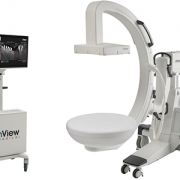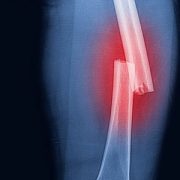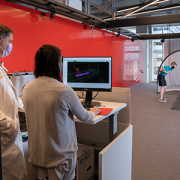Periop procedures improve scoliosis surgery infection rates

Matthew Oetgen, M.D., MBA, chief of orthopaedics and sports medicine at Children’s National Hospital, presented findings from a study aimed at improving quality and safety for pediatric spinal fusion procedures by reducing surgical site infection rates.
Pediatric orthopaedic surgery as a field is focused on improving quality and value in pediatric spine surgery, especially when it comes to eliminating surgical site infections (SSI). Many studies have documented how and why surgical site infections occur in pediatric spinal fusion patients, however, there is very little data about what approaches are most effective at reducing SSIs for these patients in a sustainable way.
At the Pediatric Orthopaedic Society of North America’s 2020 Annual Meeting, Matthew Oetgen, M.D., MBA, chief of orthopaedic surgery and sports medicine at Children’s National Hospital, presented findings from a long-term single institution study of acute SSI prevention measures.
“These findings give us specific insight into the tactics that are truly preventing, and in our case sometimes even eliminating, SSIs for pediatric scoliosis surgery,” says Dr. Oetgen, who also served on the annual meeting program committee. “By analyzing patient records across more than a decade, we were able to see that some strategies are quite effective, and others, that we thought would move the needle, just don’t.”
The team reviewed medical records and radiographs dating back to 2008 for 1,195 patients who had spinal fusion for scoliosis, including idiopathic scoliosis as well as other forms such as neuromuscular or syndromic scoliosis. Over that period of time, the division of orthopaedics and sports medicine at Children’s National was collaborating with the hospital’s infection control team to achieve several programmatic implementation milestones, including:
- January 2012: Standardized infection surveillance program
- July 2013: Standardized perioperative infection control protocols including those for pre-operative surgical site wash, surgical site preparation and administration of antibiotics before and after surgery
- March 2015: Standardized comprehensive spinal care pathway including protocols for patient temperature control, fluid and blood management, and drain and catheter management
Over the study time period, the team found that SSIs did decrease, but interestingly, the rate did not progressively decrease with each subsequent intervention.
“Instead, we found that the rate went down and was even eliminated for some subgroups when the perioperative infection control protocols were implemented in 2013 and sustained through the study period end,” says Dr. Oetgen. “The other programmatic efforts that started in 2012 and 2015 had no impact on infection rates.”
He also notes that the study’s findings have identified a crucial component in the process for infection control in pediatric spinal surgery—perioperative protocols. “A relatively uncomplicated perioperative infection control protocol did the best job decreasing SSI in spinal fusion. Future efforts to optimize this particular protocol may help improve the rates even further.”











